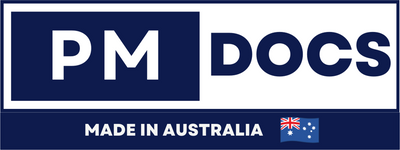Checklist For GDPR Toolkit Readiness In Australian Companies
Introduction
GDPR is a European legislation, its influence extends far beyond, affecting any company that processes the personal data of EU residents, including Australian organizations. With the growing emphasis on data privacy and protection, Australian companies need to ensure they are ready to meet GDPR requirements. Implementing a robust GDPR toolkit not only aids in compliance but also helps to enhance consumer trust. This article provides a comprehensive checklist designed to guide Australian companies towards GDPR readiness, ensuring they are equipped to handle personal data in a compliant and responsible manner.

Checklist For GDPR Toolkit Readiness In Australian Companies - Detailed Components
As Australian companies continue to expand their operations internationally, compliance with various data protection regulations, particularly the General Data Protection Regulation (GDPR) enforced in the European Union, has become crucial.
Here’s a comprehensive checklist to ensure Australian organizations are prepared for GDPR compliance with detailed components necessary for the toolkit.
1. Understanding GDPR Fundamentals
- What is GDPR? Familiarize yourself with GDPR's core principles, rights, obligations, and potential consequences for non-compliance.
- Scope of Application: Determine if your organization processes personal data of EU residents, which may trigger compliance requirements.
2. Data Inventory and Mapping
- Data Mapping: Identify where personal data is stored, processed, and transferred within your organization and including third-party vendors.
- Data Types: Classify data types (e.g., sensitive, pseudonymized, anonymized) and assess their importance for GDPR compliance.
3. Privacy Policy Review
- Policy Update: Modify your privacy policy to be GDPR-compliant, ensuring clarity regarding data collection, processing, and user rights.
- Transparency Requirements: Check that the policy informs individuals of their rights under GDPR, retention periods, and how to exercise these rights.
4. Consent Mechanisms
- Active Consent: Ensure that consent for data processing is obtained through clear and affirmative actions.
- Review Existing Consent: Audit current consent methods to verify their compliance with GDPR standards, ensuring they are timely, specific, and withdrawal options are available.
5. Data Subject Rights Management
- Rights Overview: Establish processes to enable individuals to exercise their rights such as access, rectification, erasure, and portability of their personal data.
- Response Protocol: Implement a systematic approach for handling requests efficiently within the GDPR-mandated timelines.
6. Data Breach Protocols
- Breach Response Plan: Develop an incident response strategy for potential data breaches, including detection, reporting, and mitigation measures.
- Notification Requirement: Prepare a process for notifying relevant authorities and affected individuals within the required 72-hour timeline.
7. Data Protection Impact Assessments (DPIAs)
- Impact Assessments: Develop methodologies to conduct DPIAs to identify and minimize risks related to data processing activities.
- Documentation of Findings: Keep thorough documentation of the assessment results and remediation actions taken.
8. Privacy by Design and Default
- Incorporate Privacy Measures: Integrate privacy considerations into all business processes and technologies from the outset.
- Default Settings: Ensure that the default settings of products and services prioritize user privacy.
9. Staff Training and Awareness
- Training Program: Implement ongoing training initiatives for employees on GDPR principles, data protection rights, and procedural compliance.
- Promote Accountability: Foster a culture of accountability where employees understand their role in safeguarding personal data.
10. Vendor and Third-Party Compliance
- Due Diligence: Evaluate third-party vendors’ GDPR compliance status and establish mutual data protection obligations.
- Contracts and Agreements: Ensure Data Processing Agreements (DPAs) are in place to define roles, responsibilities, and accountability for data processing activities.
Australia-Specific Considerations For GDPR Toolkit Readiness
As businesses in Australia increasingly engage with the European market, the General Data Protection Regulation (GDPR) becomes a critical component of their compliance frameworks. Understanding the unique considerations for GDPR readiness in the Australian context is essential.
Here are key points to consider:
1. Understanding the Extraterritorial Scope of GDPR
- GDPR applies not only to European organizations but also to any international business that processes personal data of EU citizens.
- Australian businesses must assess if their operations fall under GDPR due to activities targeting EU residents.
2. Integration with Australian Privacy Principles (APPs)
- Aligning GDPR obligations with Australia’s Privacy Act and its Australian Privacy Principles is vital.
- Organizations should ensure that their compliance strategy reflects both GDPR requirements and APPs to avoid conflicts.
3. Data Mapping and Inventory
- Conduct a detailed data mapping exercise to understand the personal data held, processed, and stored by the organization.
- Identify the flow of data between Australia and the EU to ensure transparency and compliance.
4. Consent Mechanisms
- GDPR emphasizes obtaining explicit and informed consent for data processing.
- Australian businesses need to review and possibly restructure their consent practices to meet GDPR standards, particularly in terms of clarity and accessibility.
5. Privacy Notices and Transparency
- Update privacy policies and notices to comply with GDPR’s transparency requirements.
- Clearly detail how personal data is collected, used, and shared, ensuring that the information is easily understandable.
6. Data Protection Officer (DPO) Appointment
- Determine the necessity of appointing a DPO based on the scale and nature of data processing activities.
- A designated DPO must be well-versed in both GDPR and local regulatory frameworks to effectively guide compliance efforts.
7. Implementation of Data Protection Impact Assessments (DPIAs)
- Conduct DPIAs for high-risk data processing activities to identify and mitigate potential privacy risks.
- This practice aligns with GDPR’s proactive approach to data protection and must be integrated into business operations.
Key GDPR & Privacy Resources For Australian Organisations
In today’s interconnected digital landscape, Australian organisations must navigate not only local privacy regulations but also international standards, particularly the General Data Protection Regulation (GDPR) of the European Union. Here are essential resources to help Australian entities manage their compliance and ensure robust data protection practices.
1. Office of the Australian Information Commissioner (OAIC)
- The OAIC offers comprehensive guidance on privacy laws in Australia, including a specific section on GDPR compliance for Australian businesses dealing with EU citizens’ data.
- The resources provided cover the key principles of the Australian Privacy Act and how they align with GDPR.
2. GDPR Text and Recitals
- Accessing the full text of the GDPR and its recitals is essential for understanding the regulation's legal language and implications.
- The official GDPR document can be found on the European Commission's website, offering foundational insights into rights related to personal data.
3. European Data Protection Board (EDPB)
- The EDPB provides opinions, guidelines, and recommendations on the interpretation and application of the GDPR.
- Keeping an eye on their resources helps Australian organisations understand evolving interpretations and enforcement actions under GDPR.
4. ICO Guidance for International Organisations
- The UK Information Commissioner’s Office (ICO) offers guidance aimed at organisations outside the EU, detailing how to comply with GDPR when dealing with UK citizens’ data.
- This resource includes practical steps for effective compliance and insights into best practices.
5. Data Protection Impact Assessments (DPIA) Templates
- DPIAs are a vital part of GDPR compliance, helping organisations identify and mitigate risks related to data processing activities.
- Various resources, including templates and tools, are available through legal consultancy firms specializing in data protection and compliance.
10-Point GDPR Toolkit Checklist For Australian Companies For Quick Reference
As Australian companies increasingly engage with European markets, understanding and implementing the General Data Protection Regulation (GDPR) is essential. This 20-point toolkit serves as a quick reference to ensure compliance with GDPR guidelines, safeguarding both customer data and the organization’s reputation.
1. Understand GDPR Applicability - Determine if your company processes personal data of EU residents. If so, GDPR applies.
2. Conduct a Data Audit - Identify what personal data you collect, how it’s used, and where it is stored.
3. Update Privacy Policies - Ensure your privacy policy complies with GDPR requirements, clearly outlining data usage, rights, and contact information.
4. Obtain Explicit Consent - Implement systems to capture and manage explicit consent from data subjects before collecting personal data.
5. Facilitate Data Subject Rights - Establish processes to enable individuals to exercise their rights under GDPR, including access, rectification, and erasure of their data.
6. Designate a Data Protection Officer (DPO) - Appoint a DPO if your business processes large amounts of personal data or includes sensitive categories of data.
7. Ensure Data Processing Agreements are in Place - Review and establish contracts with third-party vendors to ensure they comply with GDPR when processing personal data on your behalf.
8. Implement Data Security Measures - Adopt appropriate technical and organizational measures to protect personal data from breaches, including encryption and access controls.
9. Conduct Privacy Impact Assessments (PIAs) - Regularly perform PIAs to identify and mitigate risks to personal data processing activities.
10. Establish Data Breach Notification Procedures - Develop a protocol for quickly notifying authorities and affected individuals in the event of a personal data breach.
Conclusion
For Australian companies, preparing for GDPR compliance is an essential step in the journey towards responsible data management. By following this checklist, organizations can ensure they have a robust GDPR toolkit in place, reduce the risk of non-compliance, and build trust with their customers and partners. As the landscape of data privacy continues to evolve, staying ahead of regulatory requirements will not only enhance compliance but also strengthen the company's overall data governance framework.




